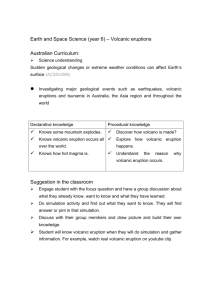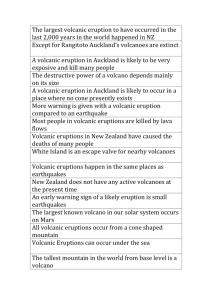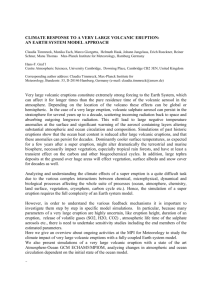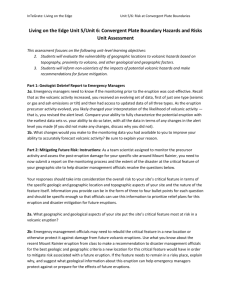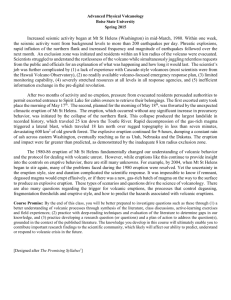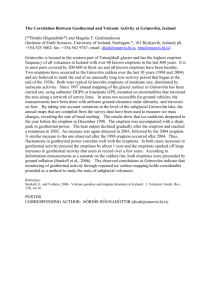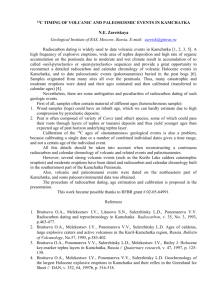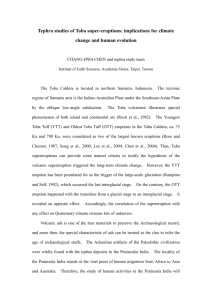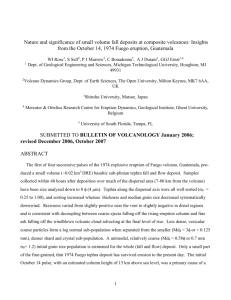paleoenvironmental effect and plants recovering after 7600 bp
advertisement
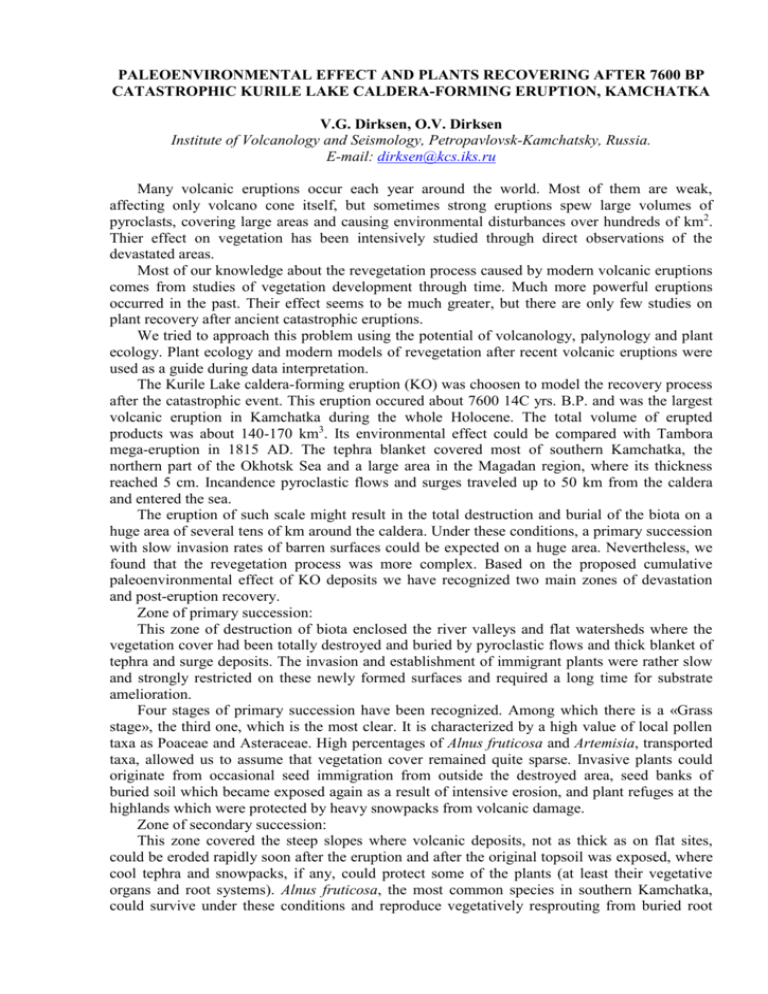
PALEOENVIRONMENTAL EFFECT AND PLANTS RECOVERING AFTER 7600 BP CATASTROPHIC KURILE LAKE CALDERA-FORMING ERUPTION, KAMCHATKA V.G. Dirksen, O.V. Dirksen Institute of Volcanology and Seismology, Petropavlovsk-Kamchatsky, Russia. E-mail: dirksen@kcs.iks.ru Many volcanic eruptions occur each year around the world. Most of them are weak, affecting only volcano cone itself, but sometimes strong eruptions spew large volumes of pyroclasts, covering large areas and causing environmental disturbances over hundreds of km2. Thier effect on vegetation has been intensively studied through direct observations of the devastated areas. Most of our knowledge about the revegetation process caused by modern volcanic eruptions comes from studies of vegetation development through time. Much more powerful eruptions occurred in the past. Their effect seems to be much greater, but there are only few studies on plant recovery after ancient catastrophic eruptions. We tried to approach this problem using the potential of volcanology, palynology and plant ecology. Plant ecology and modern models of revegetation after recent volcanic eruptions were used as a guide during data interpretation. The Kurile Lake caldera-forming eruption (KO) was choosen to model the recovery process after the catastrophic event. This eruption occured about 7600 14C yrs. B.P. and was the largest volcanic eruption in Kamchatka during the whole Holocene. The total volume of erupted products was about 140-170 km3. Its environmental effect could be compared with Tambora mega-eruption in 1815 AD. The tephra blanket covered most of southern Kamchatka, the northern part of the Okhotsk Sea and a large area in the Magadan region, where its thickness reached 5 cm. Incandence pyroclastic flows and surges traveled up to 50 km from the caldera and entered the sea. The eruption of such scale might result in the total destruction and burial of the biota on a huge area of several tens of km around the caldera. Under these conditions, a primary succession with slow invasion rates of barren surfaces could be expected on a huge area. Nevertheless, we found that the revegetation process was more complex. Based on the proposed cumulative paleoenvironmental effect of KO deposits we have recognized two main zones of devastation and post-eruption recovery. Zone of primary succession: This zone of destruction of biota enclosed the river valleys and flat watersheds where the vegetation cover had been totally destroyed and buried by pyroclastic flows and thick blanket of tephra and surge deposits. The invasion and establishment of immigrant plants were rather slow and strongly restricted on these newly formed surfaces and required a long time for substrate amelioration. Four stages of primary succession have been recognized. Among which there is a «Grass stage», the third one, which is the most clear. It is characterized by a high value of local pollen taxa as Poaceae and Asteraceae. High percentages of Alnus fruticosa and Artemisia, transported taxa, allowed us to assume that vegetation cover remained quite sparse. Invasive plants could originate from occasional seed immigration from outside the destroyed area, seed banks of buried soil which became exposed again as a result of intensive erosion, and plant refuges at the highlands which were protected by heavy snowpacks from volcanic damage. Zone of secondary succession: This zone covered the steep slopes where volcanic deposits, not as thick as on flat sites, could be eroded rapidly soon after the eruption and after the original topsoil was exposed, where cool tephra and snowpacks, if any, could protect some of the plants (at least their vegetative organs and root systems). Alnus fruticosa, the most common species in southern Kamchatka, could survive under these conditions and reproduce vegetatively resprouting from buried root systems. This assumption is supported by the presence of its pollen in all spectra, just after the eruption. Our study shows that while the Kurile Lake eruption could be regarded as an ecological catastrophe, some vascular plants could survived and then become the major sources of revegetation. Seed immigration from elsewhere was much less important. The relatively rapid revegetation was mostly due to the contribution of secondary succession which developed rapidly owing to resprouting species. This research was supported by a grant from the Foundation for Domestic Science Support.

